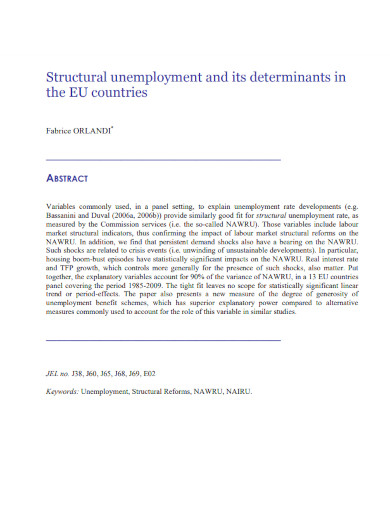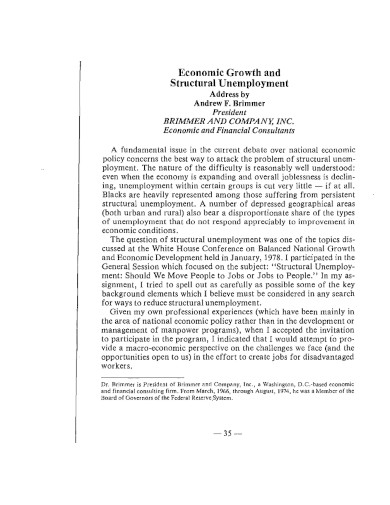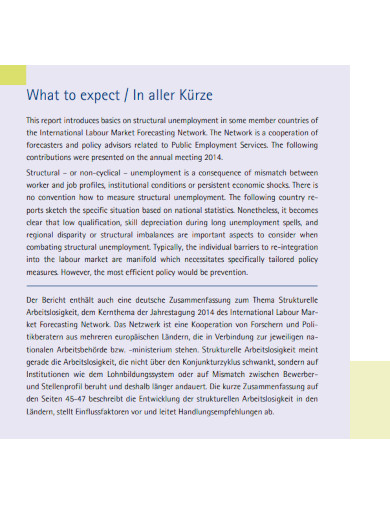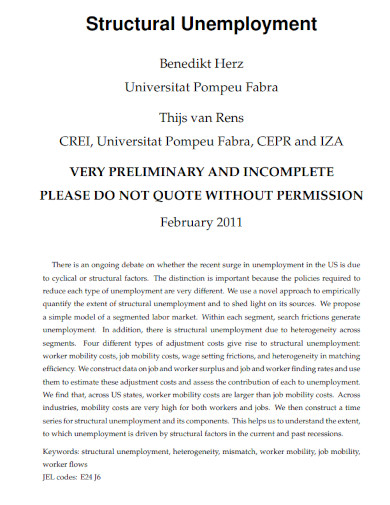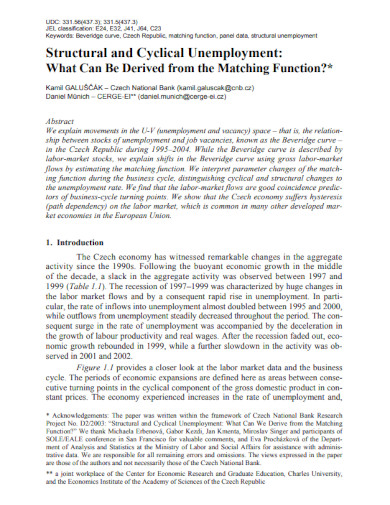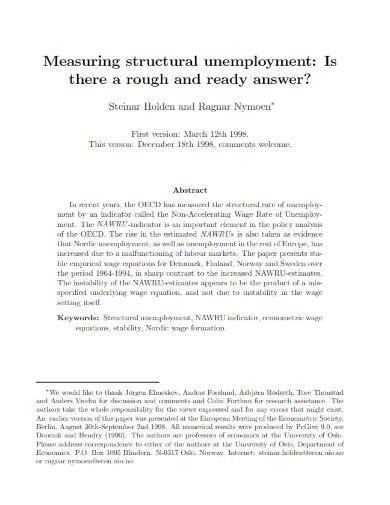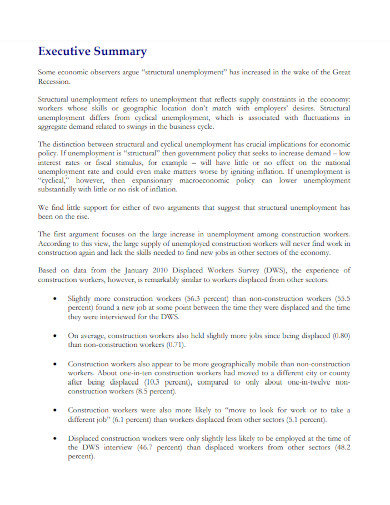Structural Unemployment Examples to Download
Unemployment is a phenomenon in a country that will affect the supply and demand of jobs in the market, and will therefore lead to the decline of a country’s economy. Structural unemployment is a type of unemployment that commonly occurs to a large number of people.
1. Structural Unemployment and Determinants
2. Technology and Structural Unemployment
3. Economic Growth and Structural unemployment
4. Structural Unemployment in Selected Countries
5. Structural Unemployment Example
6. Structural and Cyclical Unemployment
7. Measuring Structural Unemployment
8. Deconstructing Structural Unemployment
What Is Structural Unemployment
Structural unemployment is a type of unemployment that refers to a group of people who have become unemployed due to various circumstances that are outside of the business cycle. If you want to learn more about structural unemployment you can read the articles named Structural Unemployment and Determinants, Economic Growth and Structural unemployment, Structural Unemployment in Selected Countries, and Measuring Structural Unemployment.
How To Prevent Yourself From Experiencing Structural Unemployment
Structural unemployment is a state of an individual wherein they will not be able to find employment due to a specific industry or skill’s obsolescence and newer intricate instruments are added. It is important to try and avoid getting into this state as it is one of the hardest types of unemployment to overcome.
Step 1: Update Yourself on Current Technology
Begin by updating yourself on the current technology being used by modern-day companies. This will help you create informed decisions about what type of skills you will need to learn and have to obtain a job in the current market.
Step 2: Learn the Current Trend
Most companies and businesses tend to require similar soft skills needed to obtain the job. Learning the current trend allows you to know what soft skills are can be transferred from one position to another.
Step 3: Take New Skill Courses
One of the best ways to keep up with the current demands of the job market is to learn and take new skill courses. This is very important as it can let you compete in a growing competitive and advancing job market and climates, like interpersonal skills and leadership skills.
Step 4: Refresh Your Knowledge of your Skills
As time progresses newer techniques for a specific technical skill will be learned as more recent technologies and instruments are introduced. It is important to keep up to date with the most recent techniques offered in a specific hard skill.
FAQs
How does the economy recover from structural unemployment?
Structural unemployment is the most complex type of unemployment to overcome and flip. The government or country adapts to economic hardship by allowing its citizens to improve themselves via learning. Both individuals and companies help each other so that the economy can recover from structural unemployment. As People pick up new skills, firms create new procedures, and the economy changes structural unemployment is reduced and the economy can recover.
Why is structural unemployment the worst?
Structural unemployment is the worst kind of unemployment as It is more persistent than other forms of unemployment because of the involvement of both the obsolescence of various technology and industries and the lack of common people with the required skills in the job market. Not only that, structural unemployment is not in any way, shape, or form caused by the business cycle and naturally occurs outside of the said cycle. Decades may pass before their effects fade into obscurity and the economy can naturally recover. This means that structural unemployment will need a great deal of effort and force from both the governing body and the citizens to overcome this type of unemployment.
Structural vs. frictional unemployment; what is the difference between structural and frictional unemployment?
People who experience temporary unemployment due to entering the labor market or looking for a better position are said to be experiencing frictional unemployment. A mismatch between the talents held by job seekers and the capabilities required by employers leads to structural unemployment. This means that frictional employment is more temporary and can be alleviated by the person having more experience and settling into the job market, unlike structural unemployment which is harder to fix due to its innate nature and factors.
Structural unemployment occurs when the applicable people in the job market do not have a new skill or technological knowledge to keep up with the newer industries. Not only that but this new demand for skills and knowledge is accompanied by the obsolescence of a specific machine, industry, or skill. This type of unemployment is very hard to overcome as it requires a lot of effort from different places.



